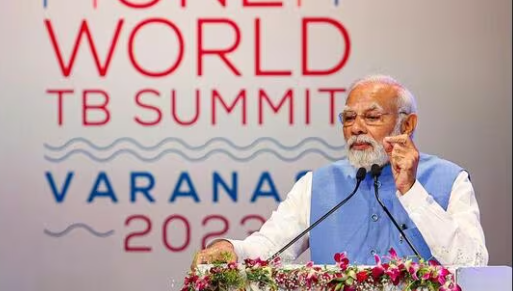India is falling behind in efforts to control tuberculosis (GS Paper 2, Social Justice – Health)

Context
- The article discusses India’s struggle with recurring shortages of tuberculosis drugs, hindering efforts to eliminate TB by 2025.
TB Drug Shortage in India:
- India, aiming to eliminate TB by 2025, is grappling with recurring shortages of drugs for drug-sensitive and multidrug-resistant TB (MDR-TB).
- Critical MDR-TB drugs faced acute shortages seven months ago, lasting nearly a year, followed by a stock-out of Delamanid in September 2021.
- The lack of drug availability exacerbates delays in diagnosis, treatment initiation, and treatment success, posing significant challenges in the TB care cascade.
Impact on TB Control Efforts:
- Non-availability of drugs contributes to treatment non-adherence, with studies showing that 8% of non-adherent patients miss treatment due to drug shortages.
- The shortage of drug-sensitive TB medicines, manufactured in India, reflects mismanagement within the national TB programme.
- Renaming the National TB Control Programme to the National TB Elimination Programme without addressing fundamental issues like drug availability suggests incompetence and lack of seriousness in TB eradication efforts.
Challenges and Consequences:
- Last-minute permissions for local drug procurement by States create logistical challenges at the field level, undermining effective TB control measures.
- A Health Ministry circular allows States to procure drugs locally for three months, with patients potentially bearing the cost if district health facilities fail to provide free drugs.
- This approach is criticized for its adverse impact on TB patients, especially those from poor socioeconomic backgrounds, who may struggle to afford medications.
Concerns and Criticisms:
- India’s inability to ensure continuous drug availability highlights deficiencies in TB control program management.
- The reliance on patients to procure medicines as a last resort is condemned as unacceptable, considering the financial constraints of most TB patients.
- The situation raises doubts about India’s ability to achieve the TB elimination goal by 2025 and suggests a lack of basic TB control elements.
Conclusion:
- Recurring drug shortages undermine India’s efforts to eliminate TB by 2025, highlighting systemic weaknesses in TB control program management.
- Urgent measures are needed to address drug availability issues and ensure timely access to TB medications for all patients, regardless of socioeconomic status.
- Effective TB control requires comprehensive strategies that prioritize drug availability, alongside other essential elements of TB care and prevention.


